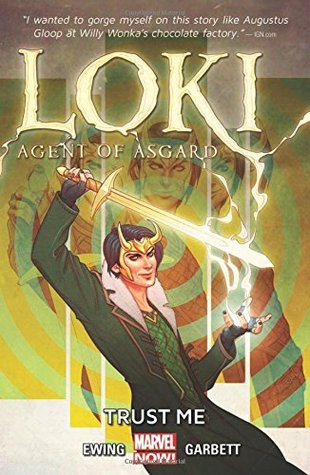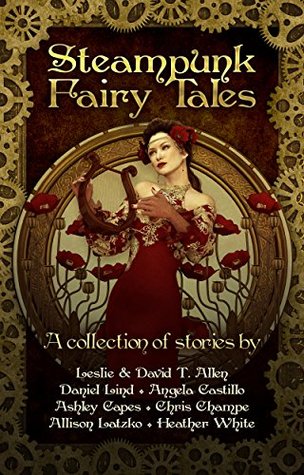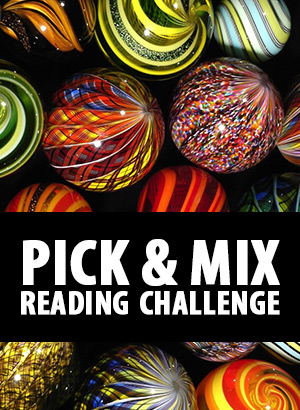June 2016
Monthly Archive
June 30, 2016
Collects Loki, Agent of Asgard issues 6-10. Victor von Doom guest stars!

Writer: Al Ewing
Artist: Lee Garbett, Jorge Coelho
This ties-in with the Avengers & X-Men: Axis event. My expectations were very low as soon as I realized this but the issues turned out to be quite fun.
In the first two issues, Loki and Doom butt heads. Loki tries to apologize recent events to his only friend but Doom kidnaps him in the middle of it. Apparently, Doom is convinced that Loki will bring about the end of the world. And so is Valeria who is helping her uncle Doom. Meanwhile, the Red Skull’s hate brainwaves reach Latveria.
In the third issue, it comic is taken over by hero Loki, Agent of Axis! Loki and the Enchantress have turned into good guys and Loki even fights crime in Las Vegas. However, both former villains are very cold and condescending towards their former allies and former friends. So, they definitely behave like brainwashed people rather than heroes. Loki has convinced himself that he can now be a new person and avert his coming fate. This and the next issue happen during the event.
The last two issues deal with the consequences. The Odinson comes to Loki for a heart to heart talk. They almost reconcile but then Loki is forced to admit what he has done. The Odinson drags him to Asgardia for a judgement. And in the final issue the old Loki shows up.
There’s some light musing about the nature of heroes and villains in these issues. The first four are still quite light and fun but the final two issues turns the tables and leaves us with a tantalizing cliffhanger.
The Loki in this collection sees the whole Axis inversion as an opportunity to redeem himself. He even tries to make the Thor-turned-evil to see light again. While this is absurd and fun, it’s not the Loki we saw in Avengers issue 1. But all the time, the older Loki is watching and laughing. That doesn’t bode well for the younger Loki at all, especially in that final issue.
I’m a fan of alternate universes so it was quite fun to see the former villains following noble impulses. But I don’t agree that being a hero or a villain is simply which impulses are stronger in you. But of course I have to find out what happens next.
June 29, 2016
The first book in a science fiction series. Doesn’t end in a cliffhanger.

Publication year: 2015
Format: Audio
Running time: 11 hours and 21 minutes
Publisher: Kelt Haven Press
Narrator: Laura Gallagher
Michigan “Mitchie” Long has just completed her mission to retrieve an Artificial Intelligence scientist and send him away from a planet hostile to AI development. Then she receives instructions to sign up to Fives Full. Fives Full is a cargo space ship and after delivering its current cargo, it got a presumably very safe task: to ferry a bunch of tourists to see a nearby planet. However, the task turns up nasty when they’re attacked by people who want to kidnap one of the tourists. Mitchie has to fight alongside the crew to keep them all alive. And that’s just the beginning of her journey on board Fives Full.
In this setting, it seems that the planets have separated into two groups: the Disconnected worlds, which are roughly the more poorer worlds, and the Fusion worlds which are the more developed worlds. The Fusion worlds are paranoid about AIs because of a past event called the Betrayal. So, the ships don’t use AIs. Fives Full is also an analog ship where even the course has to be plotted by hand, with a sliderule, in fact. This of course means that the humans on board have to be well-trained and rely on each other all the time.
This is harder science fiction than space opera usually tends to be and it has a very positive, even heroic vibe. It doesn’t have one story but several connected tasks, like a TV miniseries. I enjoyed them all.
Captain Schwartzenberger runs a tight ship, for a civilian cargo runner. He’s always looking for a way to make some money, and we’re told the reason for this, too. However, he does have a moral compass so he doesn’t do anything for money. The crew includes three other people: the first mate Shi Bingrong, the mechanic Guo Kwan, and Billy the deckhand.
Mitchie is the newest person on board. She seems to be a secret agent but she’s also an exceptional pilot and a navigator. She’s also used to working undercover and lying to people. Of course, she has her own agenda all the time.
The ending ties up most of the plotlines but there is a subplot which feels unconnected and isn’t resolved.
June 25, 2016
The first book in a science fiction series.

Publication year: 2016
Format: Audio
Running time: 15 hours and 41 minutes
Publisher: Audible
Narrator: Patricia Rodriquez
This is not an action adventure sci-fi. There are no galaxies in peril, no universes on the brink of destruction. But it does have the spaceship Wayfarer and her crew, who are doing their job: creating wormholes which are used as highways for spaceships. And the crew is great! Four humans and three aliens, who have to live and work very closely together and so like each other… mostly. I’ve seen this book described as a “feel-good” book and that fits; most of the people get along well and do their best to be civil with each other. Even governments aren’t just greedy and evil 😉 but made up of people.
Wayfarer’s captain Ashby Santoso needs a certified clerk who can deal with various legal stuff for the ship. Despite the objections of one of his crew, he hires Rosemary Harper who has just graduated.
Rosemary’s excited and nervous because she’s going away from Mars for the first time. She also has a secret which has forced her to falsify her name and leave all of her family behind. Life aboard a spaceship isn’t as hard as she feared, though, because everyone is making her feel welcome. Well, everyone except Artis Corbin. Wayfarer’s engines use algae to move and Corbin is the ship’s algaeist. He doesn’t have anything against Rosemary as a person, but he does object to having on board a person who might put everyone in danger through her ignorance. However, he does have a beef with the ship’s pilot Sissyx. And he just doesn’t like people.
Ashby’s human but instead of a gung-ho mercenary he’s a pacifist, like many humans in this world. He’s called by his first name, rather than “captain”. He’s still responsible for everyone and everything. He also has a non-human lover off-ship so there’s no romantic subplot centering on him.
In fact, this book pretty much does away with many of the elements I don’t like in SF, such as the least professional person aboard being a woman, awkward love triangles (or other toxic romantic clichés), or moronic cardboard characters, especially women. It also has many of the elements I do enjoy, such as fascinating aliens and different cultures.
The aliens in this book aren’t unintelligible, like Cherryh’s methane breathers, but nor are they humans except for the bumps in their heads. Instead, they have their own cultures, which sometimes make the humans uncomfortable, especially when family structures are different, but which aren’t shown as inferior or bad. For example, one species lays eggs which means that their young aren’t helpless from the start and are treated quite differently than human babies. The ship’s doctor belongs to a species where all the people starts out as female and later change into a male.
This is somewhat different structurally from most books because it doesn’t have one overarching plot or character arch. Instead it has several minor arches. Like a season in a TV show. Almost every person on Wayfarer has an arch devoted to him, her, or they. I still wouldn’t call these short stories because they all have impact on the story and happen along the way to the small, angry planet. While the stories aren’t focused on violence, there are some rather tense stories, too. And the ending packs an emotional punch.
This book doesn’t end in a cliffhanger. The next book seems to follow one crew member. (I’m waiting for it eagerly.)
June 24, 2016
June 22, 2016
Collects Loki, Agent of Asgard issues 1-5.

Writer: Al Ewing
Artists: Lee Garbett
The old Loki, god of evil and mischief has died. A new, young Loki has born without the burden of evil. The All-Mother of Asgardia has struck a deal with him: for every mission he does to them, they’ll forget one of his past misdeeds. His first mission is to break into Avengers Tower… and stab Thor! Of course, things aren’t what they look like at the first glance.
His next mission is to bring back missing Asgardian people back to the All-Mother’s embrace. Specifically Lorelai, another mischief deity. On the way Loki meets an interesting human who can see through all likes.
This is a comic that’s all about fun and misdirection on the surface. But a subplot involves the older Loki and that leeches out some of the fun. One comic focuses on Sigurd, Asgard’s first hero, and his Sword of Truth. It retells his story from the Eddas. Sigurd, who is called the Ever-Glorious, but the narrator calls Sometime-Glorious, has a huge chip on his shoulder and is, of course, Loki’s enemy. He’s very much an ancient hero: slayer of dragons and bedder of maidens.
Overall this was a lot of fun, except that it ends quite darkly and has a dark subplot. I enjoyed Loki’s and Lorelei’s relationship and hope to see more of her. In this comic, she’s an accomplished thief who robs banks. Also, the stories use flashbacks quite a lot, so you have to actually pay attention to the story. There comic doesn’t have much violence, compared to the average superhero comic, which was a nice surprise. Instead there’s an Ocean’s Eleven vibe which I’m a sucker for.
On the down side, this Loki has a huge backstory. It’s explained (in a rather entertaining fashion) on the first page but it is rather convoluted. Apparently, I’ve missed his “young” stage after his resurrection.
I’m going to continue reading this one.
June 20, 2016

Publication year: 2004
Format: print
Page count: 290 (including Bibliography and index)
Publisher: Princeton University Press
In this book the authors claim that myths aren’t meant to be literally true but neither are they fiction, in the modern sense. Instead they’re a way of transmitting important information in the next generation in societies which haven’t invented written word yet. Such as volcano eruptions or floods. Also, travelers needed knowledge about stars and constellations to navigate even before anything about them was written down. Modern, western people have taken to literacy so well that we’ve forgotten how to “view” myths from the point-of-view of pre-literate societies so we can’t decode them anymore.
The Barbers compare and contrast myths, such as Loki and Prometheus. They have six “Myth Principles” (and lots more sub principles) which explain the main things that the pre-literate people saw from their point-of-view, how people chose to believe such myths, etc. For example, the Principle of Silence states that the storyteller would not repeat information which the audience already knew, and indeed if he had repeated it, the story would have been less memorable and less likely to be repeated over the years. Unfortunately, this makes myths hard to understand by people who don’t know what’s missing.
Everyone’s memory is limited. That’s why myths have to be memorable and yet carry relevant information to the people telling them. Of course, it also means that people have to select which info to remember.
This is a fascinating book. It’s easy read and has examples from all over the world. Most of the myths come from Greek, Roman, Native American, and Norse cultures, but some others are included as well. I found their arguments persuasive but I doubt that all myths come from natural disasters. Some readers might be disappointed that even dragons have natural origins; although they’re different in different cultures. For example, Smaug-type German dragons who live underground and horde treasure might come from thieves (or heroes) braving into burial mounds and “fighting” with toxic gasses to get the burial goods.
Interestingly enough the writers point out how this mythical thinking can be applied to modern myths as well, such as ufos and other urban legends.
June 18, 2016
This is a collection of seven retold fairy tales in steampunk settings. I wasn’t familiar with any of the authors before.

Publication year: 2016
Format: ebook
Page count: around 100
The Clockwork People by Angela Castillo: Mr. Streusel builds toys whom all the children love. He lovingly crafts a clockwork boy and calls it Pieter. Then Pieter starts to move in his own.
Perfection by Chris Champe: Mary used to be a wonderful pianist but she had an accident which left her weak and unable to play. Her husband builds automatons which move like humans but much of his time goes to support Mary. One day, Mary realizes that her piano has been taken away and she searches the labyrinthine house for it.
The Mech Oni and the Three-Inch Tinkerer by Leslie and David T. Allen: Issun Boshi was born to an elderly couple. He was wanted but he was also tiny, only three inches tall. When he’s sixteen, he leaves his parents to become a samurai.
The Copper Eyes by Allison Latzko: Oliver is the youngest son of his inventor mother. Unfortunately, his mother has lost her mind: she has built Oliver’s brothers into her inventions. Oliver has no choice but to run away.
Strawberry Sins by Heather White: Dr. Samuel Wolfe and Dr. Fermin have been working together to make a formula which will change a man to something else and back again. Unfortunately, the formula which is supposed to turn Wolfe back to a man didn’t work and he despairs. He feels his mind is starting to deteriorate. But then Fermin’s daughter appears and starts to help him.
The Yellow Butterfly by Ashley Capes: Takashi works in a factory for a cruel and demanding boss, Mr. Nishimura. But when Nishimura closes the factory, the former workers have to move or starve. Nishimura’s daughter tries to help the men but she might make things worse.
Aubrey in the World Above by Daniel Lind: Aubrey lives in a world where thieves are sent to the World Above and forced to serve the people there. Her mother has just been condemned and her cruel father forces her to witness how the giant beanstalk springs up and spirits her mother away.
I didn’t recognize all of these stories as familiar fairy tales but I did enjoy them even though none of them were exceptional. The most recognizable ones have interesting steampunk twists. Two of them are based on Japanese fairy tales which I’m not familiar with. Interestingly enough, I thought that Strawberry Sins was based on quite another story until I got the end of the book where each writer reveals the fairy tale his or her story is based on. The book has excerpts from some of the writers’ other books.
Most of these stories are pretty dark, but I guess that’s appropriate for stories with “punk” in them. A couple of them have actually a gothic horror feeling. They have cruel family members and mad scientists. Yet, they all have hope in them, too. “The Clockwork People” and “The Mech Oni and the Three-Inch Tinkerer” are the least grim and “The Copper Eyes” even has an amusing twist on the damsel in distress trope.
June 16, 2016
Booking Through Thursday
Do you own fewer books than you used to? More?
Or do you find the quantity in your library stays pretty much the same from year to year?
(And yes, digital and audio books DO count.)
I definitely own more books than ever before, when counting ebooks. I have the bad habit of downloading every free ebook which sounds interesting. Since audio and ebooks only take up space on my computer, I don’t weed them. I’m a member of Audible so the number of audiobooks I own goes up every month.
However, I own significantly fewer print books (and comics) than I used to before my previous move.
June 15, 2016

This short story collection has at least one famous person (or creature) in each story and more than one in most stories. Most of the stories are humorous and the humor comes from putting modern concepts into historical settings and people. In many of the stories the famous person in question, like Pharaoh Ramses or King Arthur, is very concerned about his public image and changing it in very modern ways: putting a different spin on events or outright lies.
All of the stories have been previously published in short story collections. However, I haven’t read Laura Resnick before. I enjoyed this collection quite a lot.
Camelot’s Greatest Hits: Young Arthur pulls Excalibur from the stone and Merlin tells the boy that he’s now the destined war leader of Britain. But Arthur is a musician, not a fighter nor a ruler. Eventually Merlin allows him to get a band together and Arthur Pen’s Dragons are a hit!
By Any Other Name: The narrator is attracted to creative men but the relationships never last. So now he’s looking for a sane and stable ordinary guy. When he goes on a blind date with a Latin teacher he thinks he has finally found his guy. But there’s something strange about the way the guy talks.
Under A Sky More Fiercely Blue: Set in Sicily during the Second World War, the narrator is a boy who has lost almost his whole family. Then one of the famous men in the organized crime circles returns to the island offering possible relief to the beleaguered country. The boy has a change to help him and be part of history.
The Lily Maid of Astolat: A retelling of the sad story of Elaine of Astolat and an older Lancelot, as seen through the eyes of Elaine’s younger brother Torre.
The Abominable Snowman: The Yeti is really a misunderstood creature: he’s a vegetarian, reads a lot, and dreams of moving far south from the North Pole.
The Fortunes of Temperance: Temperance is hoping to start a new job and get a Tarot reading from madam Rabinowitz. One the way, she meets her friend Strength and even flits a little with the Knight of Swords.
Qadishtu: co-written with Kathy Chwedyk: Sirara’s son Lahar has the wasting sickness. Even though Sirara is Inanna’s high priestess in Ur, she can’t heal him. But even the most powerful priests in Ur can’t heal him either so she must get him to Dilmun. But the Festival of the New Year is very close and King Ibbi-Sin forbids Sirara from leaving, on pain of death. But Sirara doesn’t care; she takes her son and a few slaves and heads to Dilmun.
The Adventure of the Missing Coffin: A man comes to Sherlock Holmes looking for help. But this time the client is somewhat stranger than usual: his coffin has been stolen.
Licensed to Reclaim: Once again, the world’s most famous spy finds himself captured by his opponent. However, things go a bit differently than usual this time.
Grievous Wounds: After the battle of Camlan, Arthur lays grievously wounded and reminisces about his life and choices.
Those Rowdy Royals!: The marriage of Eleanor of Aquitaine and King Louis VII has been annulled. That and the subsequent events in the English Royal Court lead to juicy gossip on the pages of Medieval Times, The Courtly Chronicle, the Norman Rag, and other publications.
The Spin Wizard: The Theban Times and the Elephantine Express are writing about Ramses the Mediocre and not in a flattering way. Fortunately, Imhotep’s spirit knows just what the Pharaoh should do to clean up his image.
Curren’s Song: Curren is a young man who sees and hears things that other people can’t. The people in his village fear and shun him but a newcomer is fomenting outright hatred towards him. One of Curran’s problems is that he doesn’t know if which things only he sees or hears. One of those things is a group of lizardlike creatures in the nearby loch.
The Quin Quart: Do you think that Guinevere is the mostly bland character in Camelot? Perhaps that notion is the fault of the Quin Quartet. In this story, we find out that Guinevere is actually a well-read woman who fights just as much as the knights, if not more. But her subjects couldn’t stomach a woman like that, much less a queen, and she was so unpopular that Arthur and Merlin had to turn to the sons of Lot who remade her into the most popular lady in Medieval times, just as they made Beowulf a famous hero.
Avant Vanguard: Robin Hood is already famous for robbing from the rich and giving to the poor, and he does his best to give troubadours new material. But then he meets the rich Earl Vanguard on the road and robs him. The Earl protests that Robin will make him destitute.
June 11, 2016
The fifth book in the series is an actual book and not a collection of short stories as the other book have been.

Publication year: 1968 (1997 reprint)
Format: print
Page count: 278
Publisher: White Wolf Publishing
The short swordsman and sorcerer The Grey Mouser and the giant Northerner swordsman Fafhrd have just returned to Lankhmar when they’re attacked by a collection of brigands, hired wizards, and people to whom they owe money. However, the duo manages to drive the brawlers off, solidifying their own reputation, and immediately they’re escorted to the presence of the city’s Overlord, Glipkerio Kistomerces. The Overloard needs exceptional guards for his grain fleet going to Movarl. The duo agrees.
However, the Overlord failed to mention that two other grain fleets have already gone missing. The men are on alert and waiting for a disaster. But the Mouser and Fafhrd have their hands full entertaining the enchanting and lovely Demoiselle Hisvet. The young woman is part of the fleet; she has twelve trained white rats, which are also going to the king of Movarl, and she’s the daughter of a wealthy and influential merchant. She’s also proud and fickle, toying with both swordsmen. Her maid Frix is always at her side.
Of course, things so shortly wrong. Or right, for the POV of the reader. This book might be the weirdest one of the series to date. It has a man traveling between worlds and rats wielding weapons. This time we see a part of Lankhmar which hasn’t been explored before.
The Swords of Lankhmar focuses on the Mouser; during most of the first half of the book Fafhrd is drugged and around halfway the two men part ways. So the camaraderie between them is missing and the friendly rivalry is only seen in the beginning. It’s certain a change of pace, though. (Not a complaint, just an observation.) They’re also older than in the previous tales but still more than willing to let a beautiful face makes fools of them.
The villains are devious and despicable, as usual, and the maids and slaves naked and whipped. Sexual sadism has been part of the series before, too, but it’s more pronounced here, perhaps because of the length of the book.
Still, this another very entertaining book in the series.
Next Page »









